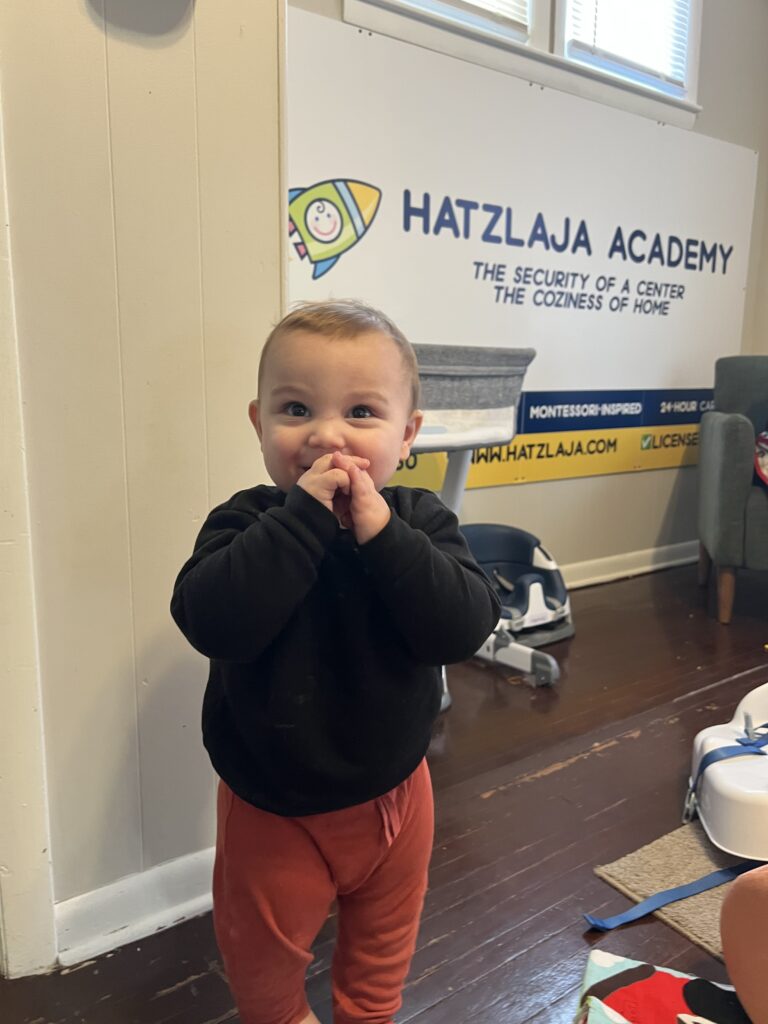Integrating technology into early childhood education is a distinctive aspect of Hatzlaja Early Childhood Academy’s approach, setting us apart from traditional Montessori education. While Montessori emphasizes hands-on, sensory-based learning with tangible materials, Hatzlaja recognizes the importance of preparing children for a digital world. We thoughtfully incorporate technology to enhance learning, ensuring it complements rather than replaces experiential activities.
By embracing technology within our curriculum, Hatzlaja Early Childhood Academy equips children with the skills necessary to navigate the digital landscape responsibly, bridging the gap between traditional educational philosophies and contemporary technological advancements.
Teaching children to use technology appropriately is essential in today’s digital age. At Hatzlaja Early Childhood Academy, we emphasize guiding children to become responsible digital citizens, ensuring technology enhances their learning without hindering their development.
Hatzlaja’s Approach to Technology Integration
Our philosophy centers on intentional and developmentally appropriate use of technology:
- Purposeful Integration: We incorporate technology to support and enrich our curriculum, ensuring it serves as a tool for learning rather than a distraction.
- Active Engagement: Children engage with interactive media that promotes critical thinking, creativity, and problem-solving skills.
- Balanced Exposure: We balance screen time with hands-on activities, outdoor play, and social interactions to foster holistic development.
- Digital Literacy: From an early age, we teach children basic technology-handling skills, akin to early literacy development, preparing them for future learning environments.
Pediatric Screen Time Recommendations
According to the Mayo Clinic, it’s crucial to align technology use with pediatric guidelines to ensure it supports healthy development:
- Infants (0-18 months): Avoid screen time, except for video chatting to maintain social connections.
- Toddlers (18 months-3 years): If introducing digital media, choose high-quality programming and engage in co-viewing to help them understand what they’re seeing.
- Preschoolers (3-5 years): Limit screen time to one hour per day of high-quality content. Co-viewing remains important to facilitate learning and application.
- School-Age Children (6 years-12 years): Establish consistent limits on screen time, ensuring it doesn’t interfere with sleep, physical activity, or other essential health behaviors. Encourage the use of technology for educational purposes while monitoring recreational use.
Guidance for Parents
To foster healthy technology habits at home:
- Model Responsible Use: Demonstrate balanced screen habits, as children often emulate adult behaviors.
- Create Tech-Free Zones: Designate areas and times, such as during meals and bedtime, to be free from screens to encourage family interaction and rest.
- Select Quality Content: Choose educational and age-appropriate media, utilizing resources like Common Sense Media for recommendations.
- Engage Actively: Participate in your child’s screen activities to make them more interactive and educational.
- Encourage Alternative Activities: Promote physical play, reading, and hobbies that don’t involve screens to ensure a well-rounded development.
By adhering to these guidelines and our structured approach at Hatzlaja Early Childhood Academy, we aim to equip children with the skills to navigate the digital world responsibly, ensuring technology serves as a beneficial tool in their growth and education.
For parents seeking guidance on selecting high-quality, age-appropriate media content, Common Sense Media offers comprehensive reviews and recommendations. This resource aids in making informed decisions about the media your child engages with, aligning with our commitment to responsible technology use.



